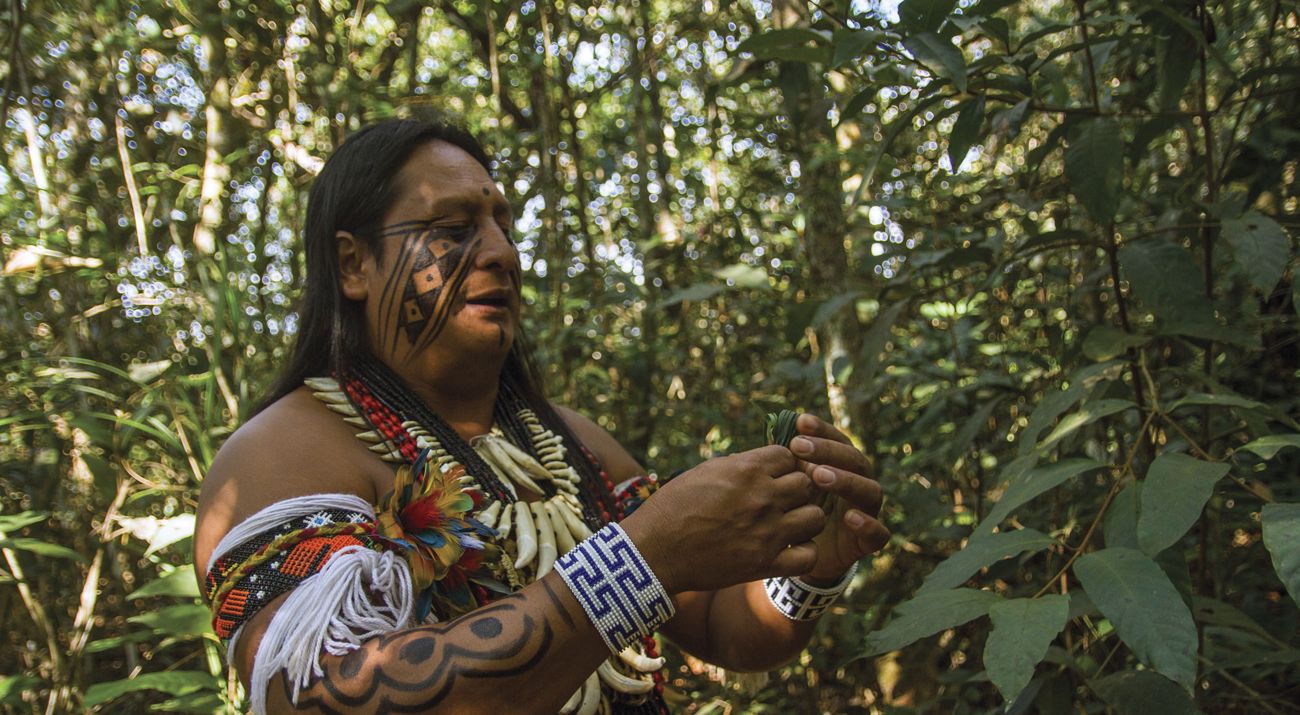Nearly the size of the continental United States, the Amazon is the world’s largest tropical forest, home to 10% of all species, the source of one quarter of the world’s fresh water and a vital regulator of the world’s climate. But this magnificent forest embodies the competing pressures of long-term and short- term economic, social and environmental demands.
The lands and waters of the Amazon are inextricably linked to indigenous peoples. Nearly 300 indigenous groups are stewards of one quarter of the Amazon rainforest. They shelter some of the last, most intact swaths and are often on the front lines of deforestation and fires.
TNC has a long history of partnering with indigenous peoples across the Amazon. Our efforts bridge traditional knowledge and science to support indigenous organizations in managing their lands and amplify their voices.
Since 2003, TNC has partnered with eight indigenous groups to manage 12 million acres in the Brazilian Amazon, with a special focus on supporting indigenous women as forest stewards. For example, TNC was invited by women of the Xikrin Indigenous People of Bacajá to help them implement their sustainable development vision. These women recently gained UN recognition for their production of babaçu (coconut) oil—a healthy, traditional food that can be sustainably harvested and boosts the local economy.
In Peru, Colombia and soon Brazil, TNC is coordinating a “Train the Trainers” program on indigenous territorial governance that brings together indigenous leaders across the three countries to share experiences and reinforce indigenous identity, ancestral knowledge and best practices.
In Colombia’s Caquetá region, previously the most deforested state in the country, TNC is supporting indigenous groups to consolidate their autonomy and improve relationships with neighboring farmers. As Óliver Gasca, Chief Ri Eel Diamante, from Solano, Caquetá explains, “Our main concern was that farmers were logging too much, wiping out the jungle. Seen from above, indigenous reserves looked like verdant islands. That’s why we identified the need to open the dialogue, so that farmers could understand indigenous cultures and we could understand their challenges.” In return, Román Gaitán, a farmer leader stated: “We exchanged ideas, we exchanged cultures for the greater good of the territory... We may look different and talk differently, but now I can see we are much alike... we need more organizations like TNC, conveners, mediators, to unite farmers, indigenous people, everyone.”
Around the globe, indigenous peoples are vital leaders in the pursuit of a sustainable future. While indigenous peoples make up less than 5% of the world’s population, they are stewards of 25% of the world’s lands and nearly 80% of the global biodiversity. Strengthening indigenous institutions is not only a human rights issue—it is also crucial for achieving global climate and biodiversity goals.


